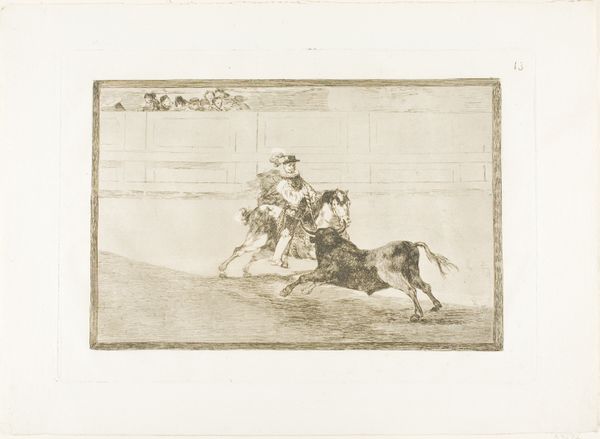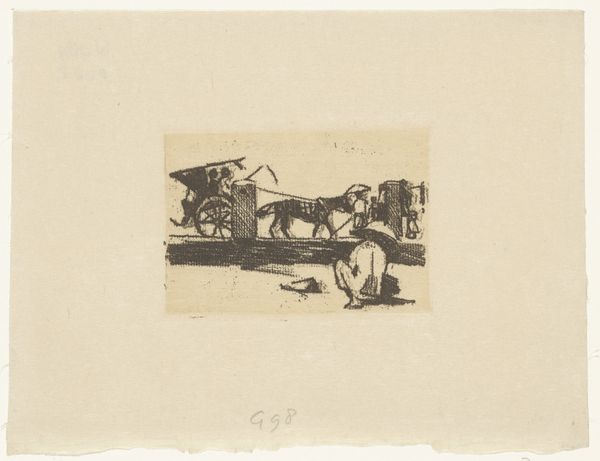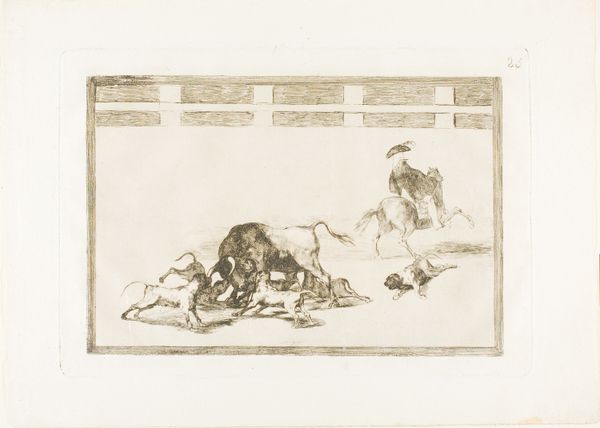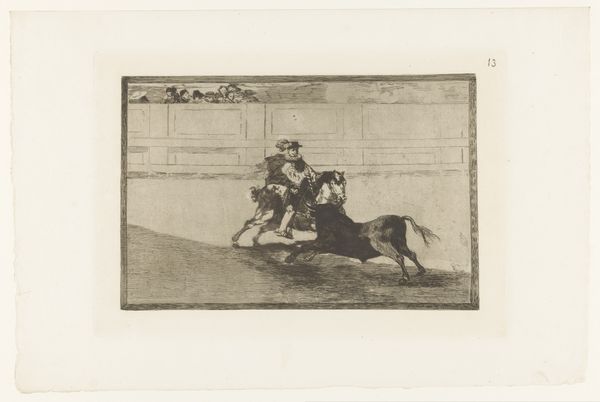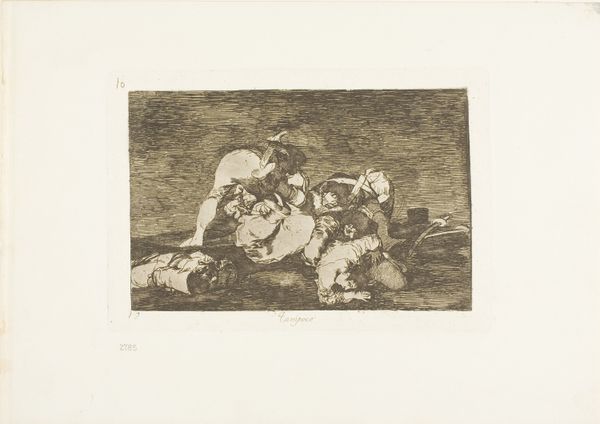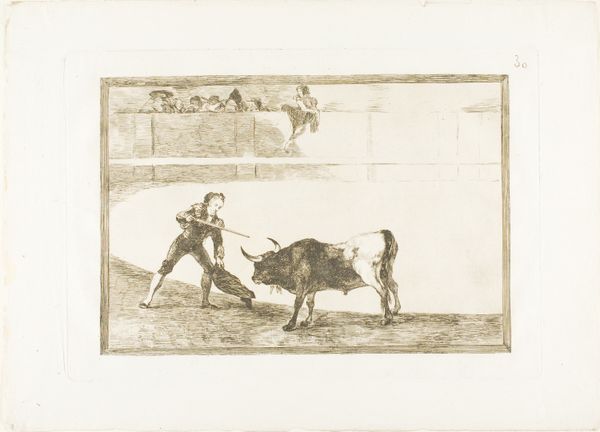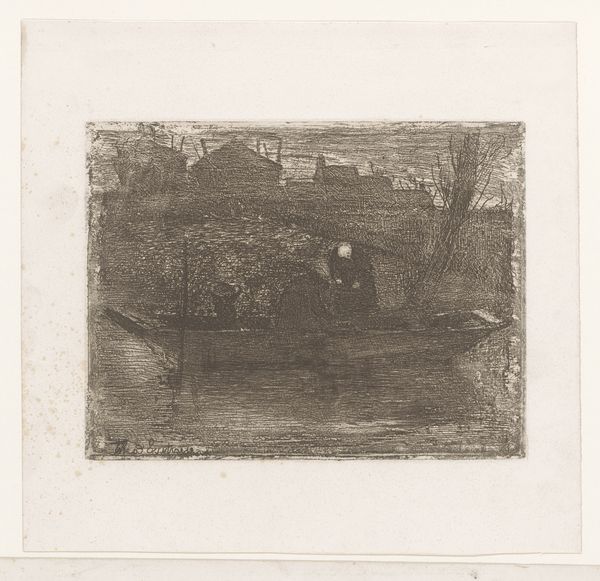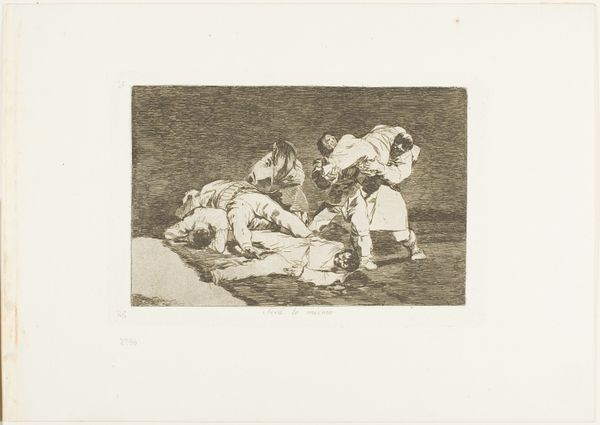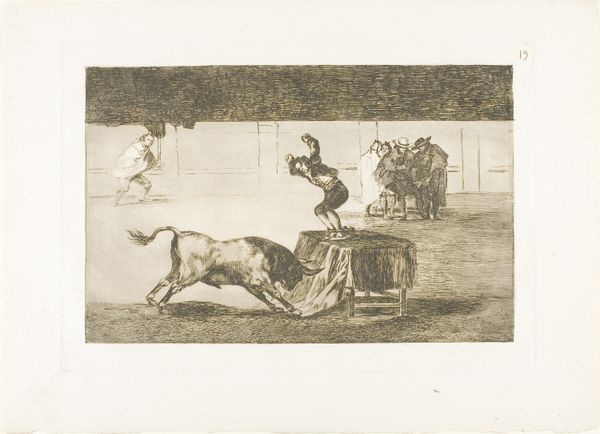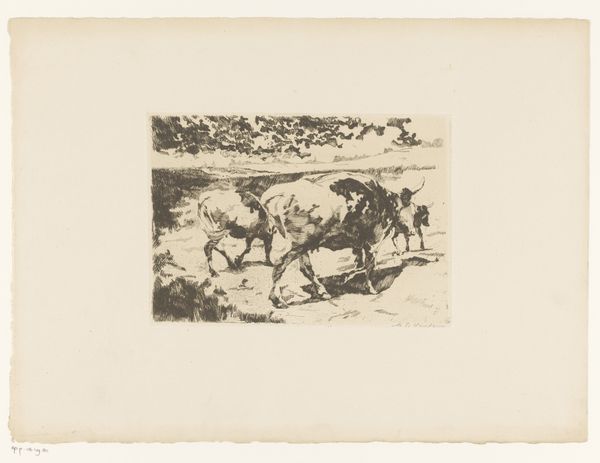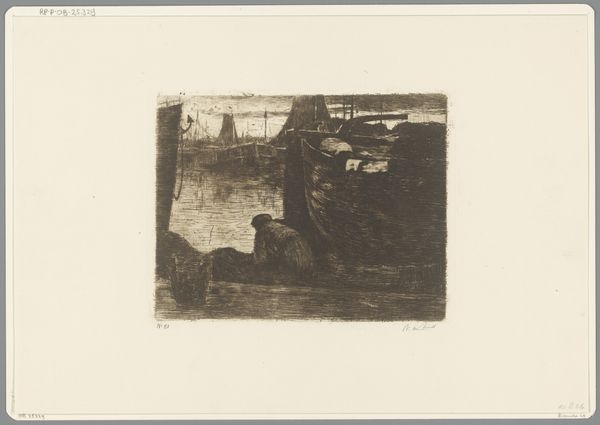
A Picador is Unhorsed and Falls under the Bull, plate 26 from The Art of Bullfighting Possibly 1814 - 1816
0:00
0:00
drawing, print, etching, paper
#
drawing
#
aged paper
#
toned paper
#
light pencil work
#
ink paper printed
# print
#
etching
#
pencil sketch
#
etching
#
paper
#
ink drawing experimentation
#
pen-ink sketch
#
watercolour illustration
#
watercolor
Dimensions: 203 × 310 mm (image); 245 × 353 mm (plate); 322 × 446 mm (sheet)
Copyright: Public Domain
Editor: We're looking at "A Picador is Unhorsed and Falls under the Bull," plate 26 from "The Art of Bullfighting" by Francisco de Goya, dating from possibly 1814-1816. It's an etching, a print on paper, currently at the Art Institute of Chicago. The scene feels intensely chaotic and violent, but also… somehow formalized, distanced. How do you interpret the cultural significance of bullfighting as depicted here? Curator: It's fascinating how Goya captures this dance with death. The bullfight, steeped in ritual and machismo, becomes a stage for primal instincts. Notice how the fallen picador, overwhelmed by the bull, transforms into a sacrificial figure. Consider the layers of meaning, from pagan roots of sacrifice to modern ideas about Spanish identity that bullfighting comes to represent. Do you see the crowd as complicit in the unfolding drama? Editor: They’re just sketched in, almost specters. Does that ghostly quality of the spectators comment on their role? Curator: Precisely. The ghostly crowd hints at a collective hunger for spectacle. The bullfight can act as a conduit for social tensions and anxieties – anxieties perhaps heightened during the Napoleonic Wars that marked Goya's lifetime. Can you sense that tension in the print's frenetic energy? Editor: Yes, definitely, the lines are so agitated. It really brings out the drama of the scene. Curator: Exactly! And Goya masterfully utilizes this to tap into the heart of human struggle and Spain's cultural memory of resistance. The image leaves us with more questions than answers. Editor: I see the cultural connections you are talking about. It’s a lot to take in. Curator: Indeed, Goya challenges us to contemplate what such imagery means for our collective history.
Comments
No comments
Be the first to comment and join the conversation on the ultimate creative platform.

